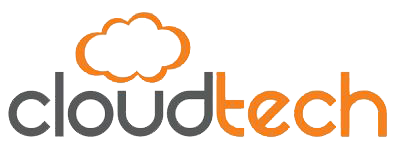The generation, use, storage, and exchange of healthcare data have all changed dramatically.
Cloud computing’s growing acceptance in healthcare goes beyond simply storing data on cloud architecture. Healthcare providers are currently using this technology to increase efficiencies, streamline processes, minimize healthcare delivery costs, and enable personalization in treatment plans in order to improve outcomes.
There are two advantages of moving to the cloud, writes Arkenea’s Vinati Kamani for the site Health IT Outcomes. First, it has been proven beneficial to both healthcare providers and patients. Second, on the business side, cloud computing is effective in lowering operational costs while enabling providers to provide high-quality, tailored treatment.
Patients who have grown accustomed to receiving services immediately are now able to receive the same promptness from the health sector. Cloud also improves patient outcomes by increasing patient participation with their health plans by giving them access to their healthcare data.
The remote accessibility of healthcare data liberates both clinicians and patients, removing geographic obstacles to healthcare.
Lower costs
Cloud computing is based on the availability of computer resources such as data storage and processing power on demand. The requirement for hospitals and healthcare organizations to purchase hardware and servers altogether is eliminated. There are no upfront costs connected with data storage in the cloud. You just pay for the resources you utilize, resulting in significant cost savings.
Easier interoperability
Interoperability strives to create data interconnections across the healthcare system, regardless of where the data originates or is stored. Patient data is readily available for dissemination and generating insights to facilitate healthcare planning and delivery as a result of interoperability powered by cloud usage.
Cloud computing enables healthcare providers to easily access patient data gathered from a variety of sources, communicate it with stakeholders, and issue prescriptions and treatment procedures on time.
It also reduces the distance between professionals, allowing them to analyze situations and provide opinions regardless of geographical constraints.
Interoperability across the many components of the healthcare industry—pharmaceuticals, insurance, and payments—is also facilitated by storing patient data in the cloud. This enables the seamless movement of data between the many stakeholders, hence speeding up healthcare delivery and increasing efficiency.
Greater access to analytics
In the cloud, relevant patient data from many sources can be gathered and computed. Medical research can be boosted by using Big Data analytics and artificial intelligence algorithms on cloud-stored patient data. The processing of massive datasets becomes more viable because of the cloud’s advanced computational capability.
Analyzing patient data can also lead to the development of more individualized care plans for patients on an individual basis. It also guarantees that all relevant patient information is recorded and that nothing is overlooked when prescribing treatments. When it comes to retrieving essential patient data, cloud-based data analysis comes in handy.
Patient’s ownership of data
Cloud computing decentralizes data and empowers individuals to make decisions about their health. By acting as a tool for patient education and engagement, it increases patient participation in health-related decisions and leads to more informed decisions.
When putting data in the cloud, patient information and medical imaging may be conveniently saved and retrieved. While cloud security remains a worry, cloud data storage is unquestionably more reliable. With increased system uptime, data redundancy is reduced. Data recovery is easier because the backups are automatic and there isn’t a single touchpoint where the data is saved.
Telemedicine capabilities
The ability to retrieve data from a distance is perhaps the most significant benefit of cloud storage. The marriage of cloud computing and healthcare offers the potential to improve telemedicine, post-hospitalization care plans, and virtual drug adherence, among other healthcare-related services. Telehealth enhances access to healthcare services as well.
Telemedicine apps make healthcare delivery more convenient while also improving the patient experience. Cloud-based telehealth systems and applications enable easy data exchange, improved accessibility, and healthcare coverage for patients during the prevention, treatment, and recovery phases.
Of course cloud computing still has a long way to go. Given all the benefits and advantages mentioned above, there is no doubt that cloud is the way to go.
